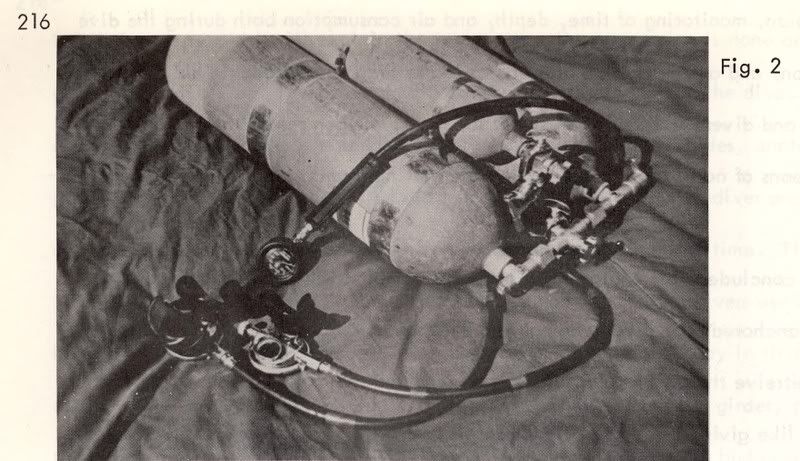I have a lot of publications from the 1970s, and one is the Proceedings of the Sixth International Conference on Underwater Education (IQ6), "Sponsored by National Association of Underwater Instructors," Copyright NAUI 1975. In it there is a paper titled "An Introduction to East Coast Wreck Diving," by Ken Heist. Ken writes about the equipment for wreck divers:

Proceedings of the Ninth International Conference on Underwater Education, Addendum (IQ9), Sponsored by The National Association of Underwater Instructors, Copyright NAUI 1977. Lee H. Somers, PhD, published an article in this publication titled "Profile of a Great Lakes Diver." In it Dr. Somers wrote:
REGULATORS
Single Hose 77.4%
Double Hose 15%
Submersible Pressure Gauge 60%
Auxiliary Second Stage 19.2%
Reserve on regulator 10.8%
Pony Cylinder 4%
I just checked my book, the NOAA Diving Manual, Diving for Science and Technology, 1975 and it made no mention of either octopus or pony bottles. It did show a pony bottle in use, but it was mounted on top of a closed-circuit mixed-gas rebreather. This is in keeping with my recollections that pony bottles were used only in wreck, ice and cave diving at that time.
SeaRat
...The divers can now get ready to dive. Their equipment over and above the "normal" diving equipment may include:
Double Tanks - Because of the depths involved in diving the "better" wrecks which are generally deeper than 100 feet an increased air supply is desirable. These wrecks are generally the more intact ones that have not been blown up by the Coast Guard or Navy as hazards to navigation.
Pony Bottles - Used as a totally independent source of air with a 10 to 13 cu. ft. capacity. Figure 2 shows a set of double tanks with a pony bottle. Note the pony regulator has no exhaust tee; this prevents confusion as to which regulator is the main regulator. This also helps to prevent the normally hanging pony regulator from getting caught on anything...

Proceedings of the Ninth International Conference on Underwater Education, Addendum (IQ9), Sponsored by The National Association of Underwater Instructors, Copyright NAUI 1977. Lee H. Somers, PhD, published an article in this publication titled "Profile of a Great Lakes Diver." In it Dr. Somers wrote:
In his Table 4, on diving equipment, he noted the following:Sixty percent of the divers now have submersible pressure gauges; this is slightly below the Skin Diver Reader Survey figures of 63.9%. It is encouraging to note that 23.2% now use an auxiliary second stage (octopus) or pony emergency unit.
REGULATORS
Single Hose 77.4%
Double Hose 15%
Submersible Pressure Gauge 60%
Auxiliary Second Stage 19.2%
Reserve on regulator 10.8%
Pony Cylinder 4%
I just checked my book, the NOAA Diving Manual, Diving for Science and Technology, 1975 and it made no mention of either octopus or pony bottles. It did show a pony bottle in use, but it was mounted on top of a closed-circuit mixed-gas rebreather. This is in keeping with my recollections that pony bottles were used only in wreck, ice and cave diving at that time.
SeaRat
Last edited:



